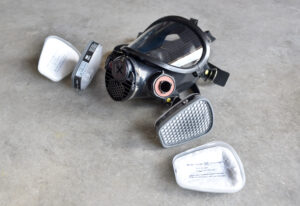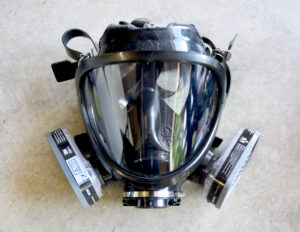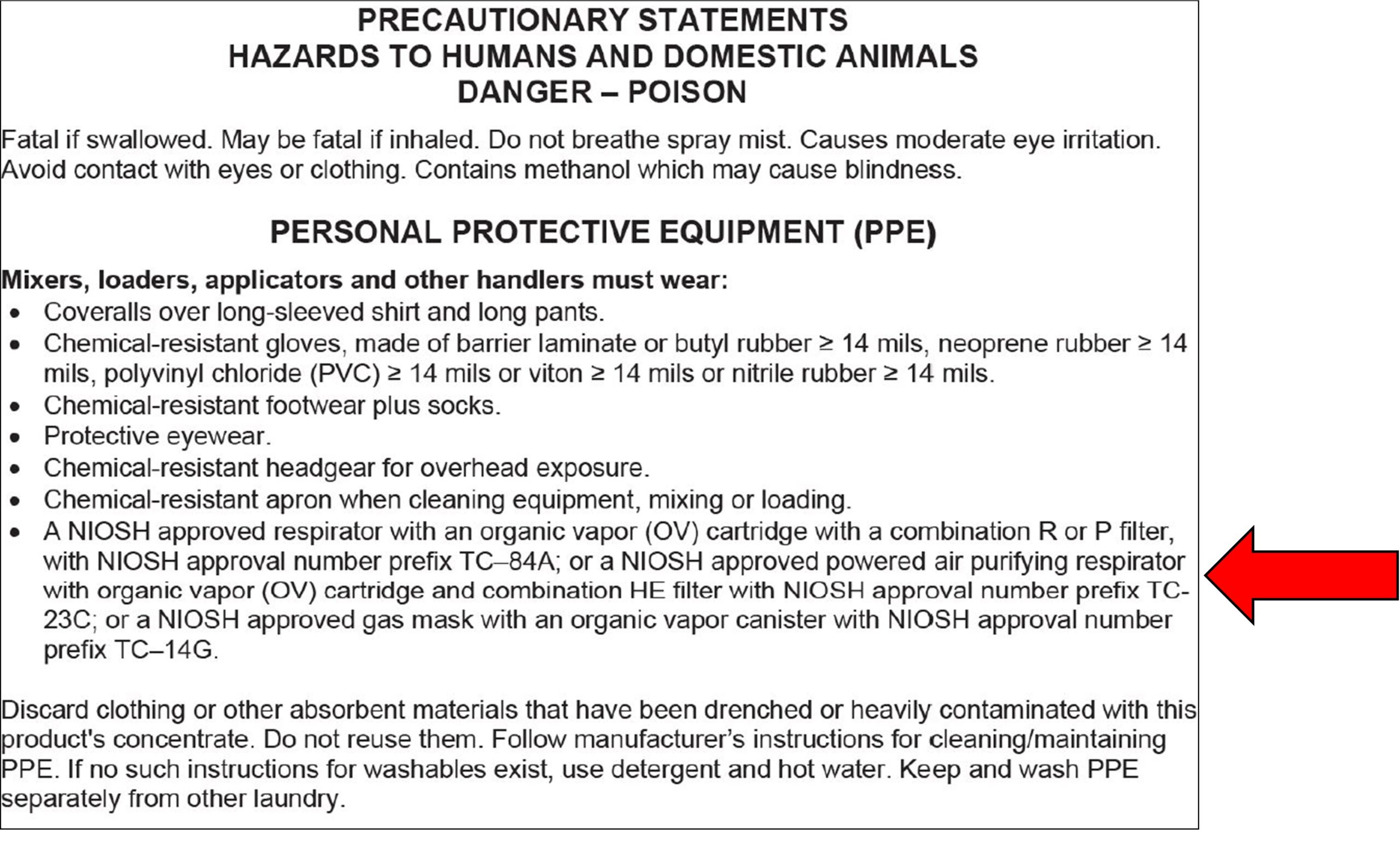WELCOME!
Thank you so much for visiting. This website is designed to help agricultural employers, pesticide handlers, and the professionals they rely on to comply with respiratory protection requirements outlined in the 2015 Revised Worker Protection Standard (WPS).
What is the WPS and why was it revised in 2015?

Air-purifying elastomeric half-facepiece respirator with combination organic vapor cartridge and P100 particulate filter, NIOSH approval number prefix TC-84A
The WPS (40 CFR Part 170) is a regulation originally issued in 1992 by the U.S. Environmental Protection Agency (EPA) to reduce the risks of illness or injury to agricultural workers and pesticide handlers resulting from occupational exposures to pesticides used in the production of agricultural plants on agricultural establishments (i.e., farms, forests, nurseries and enclosed space production facilities, such as greenhouses). The 2015 revisions to the WPS strengthened elements of the existing rule and ensured workers and handlers receive workplace protections comparable to those provided to workers in other industries, while still considering the unique needs of agricultural operations.
How do the 2015 revisions to the WPS affect respirator requirements?

Air-purifying elastomeric full-facepiece respirator with combination organic vapor cartridge and N95 particulate filter, NIOSH approval number prefix TC-84A
The WPS adopted certain Occupational Safety and Health Administration (OSHA) provisions that require handler employers to provide medical evaluations, fit-testing, and training to handlers when using pesticide products that require use of a respirator. Specifically, the WPS section on personal protective equipment (40 CFR § 170.507) incorporated some requirements of OSHA’s Respiratory Protection Standard [29 CFR § 1910.134]. An agricultural employer who employs at least one pesticide handler (directly or through a labor contractor) has a responsibility to provide and maintain records of the following before the handler performs any handling activity where a respirator is required to be worn:
- A medical evaluation by a physician or other licensed health care professional
- Annual fit-test for each type of respirator required by the labeling of each pesticide product the handler will be using
- Annual training on how to properly use each type of respirator required by the labeling of each pesticide product the handler will be using
Agricultural employers must provide the appropriate and correctly fitted respirators, training, and medical evaluations at no cost to the employee.
The goal of the respirator requirements is to ensure the pesticide handler:

Image: iStock
- Is physically capable of wearing a respirator
- Receives the intended protection by having the respirator fit properly
- Knows how to use the respirator correctly
What you will find on this website
Throughout this website, you will find information on medical evaluation, fit-testing, and training requirements that agricultural employers must meet before pesticide handlers employed with them perform any handler activity where a respirator is required by a WPS-labeled pesticide product. You will also find guidance on the proper selection of respirators based on pesticide product labels, and instructions regarding recordkeeping and respirator maintenance requirements. The information is based on the 2015 Revised WPS (40 CFR Part 170), OSHA’s Respiratory Protection Standard (29 CFR § 1910.134), and publications developed by the Pesticide Educational Resources Collaborative (PERC) in collaboration with the EPA (licensed under CC BY-NC-SA 4.0): a) How to Comply with the 2015 Revised Worker Protection Standard for Agricultural Pesticides–What Owners and Employers Need to Know and b) Worker Protection Standard (WPS) Respiratory Protection Guide–Requirements for Employers of Pesticide Handlers. Lastly, you will find resources that provide additional details on fulfilling respiratory protection requirements. The information on this website should be used as initial guidance. Agricultural employers and pesticide handlers are responsible for ensuring respirator requirements outlined in the WPS that apply to them are properly fulfilled.
About us
This website was created by University of Florida Institute of Food and Agricultural Sciences faculty in the Department of Agricultural Education and Communication and the Miami Dade County Extension Office as part of a pilot project funded by the National Institute for Occupational Safety and Health under award number U54OH011230 and conducted at the Southeastern Coastal Center for Agricultural Health and Safety. The views expressed on this website are those of the authors and do not necessarily reflect the views of the organizations and agencies that provided support. The authors and supporting organizations and agencies do not endorse any products or commercial services mentioned on this website.
Acknowledgements
Special thanks to J. Fajardo, F. Amon, R. Davalos, G. Cooke, and K. Cannon for their invaluable feedback and assistance. Unless otherwise credited, photography and graphic design are by Frecklefoot Creative.




